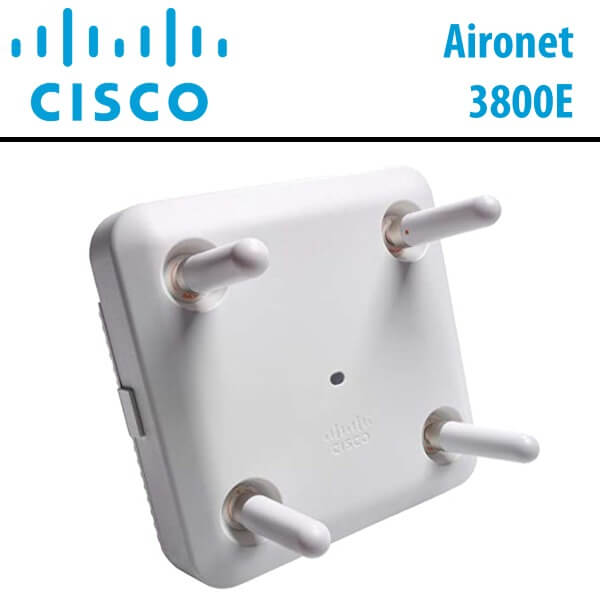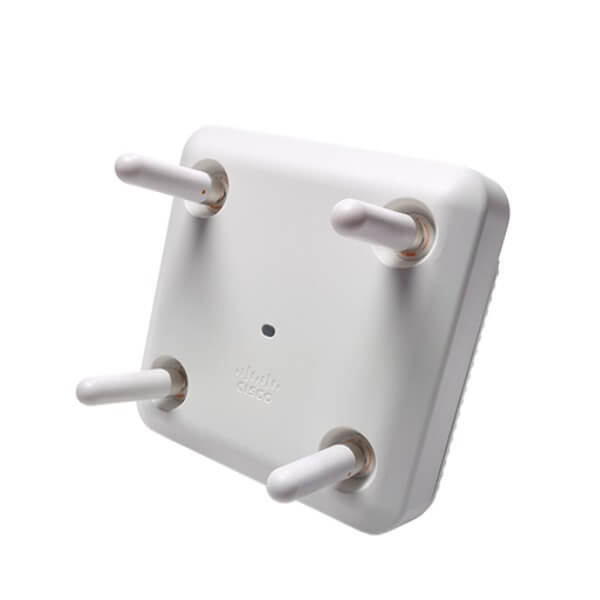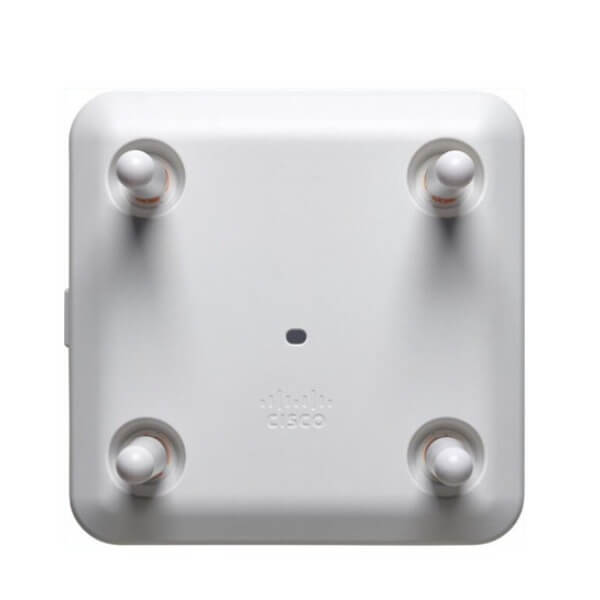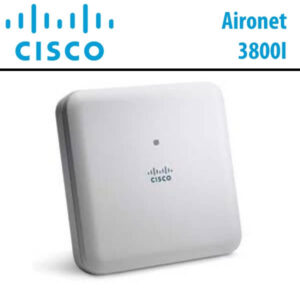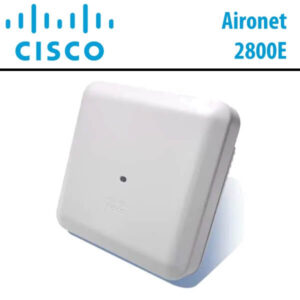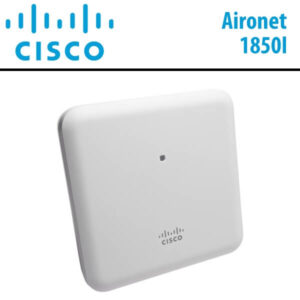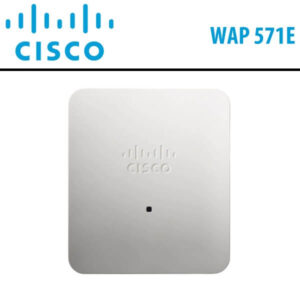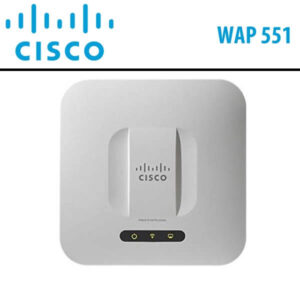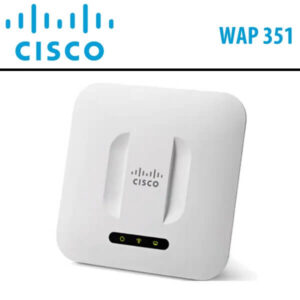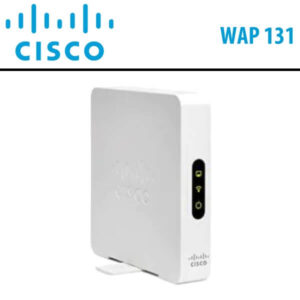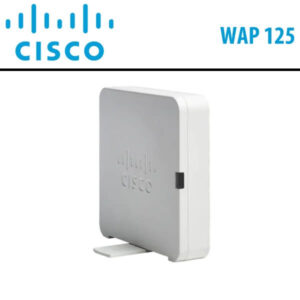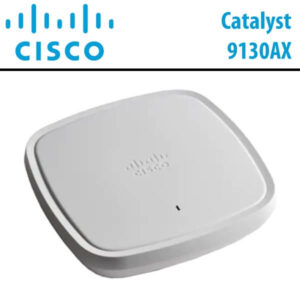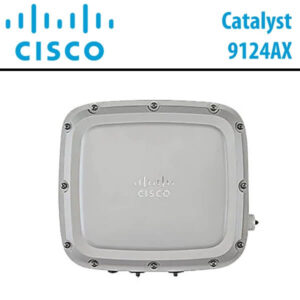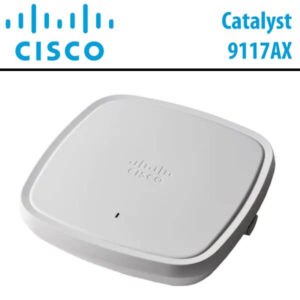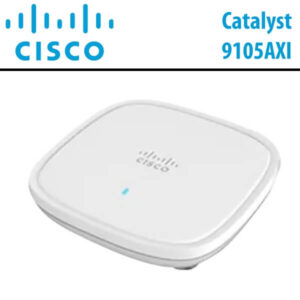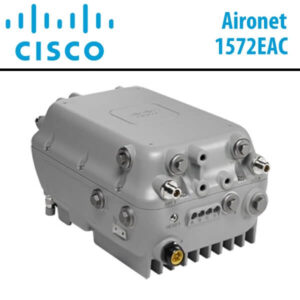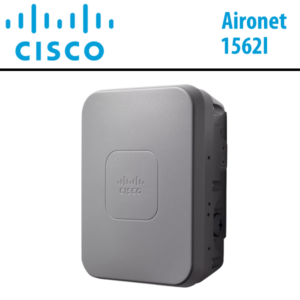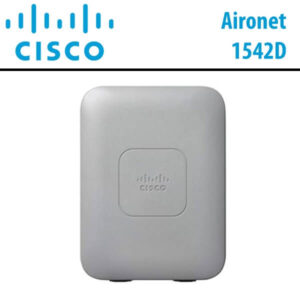Description
Cisco Aironet3800e Dubai
The Cisco Aironet3800e Dubai introduces the latest 802.11ac Wave 2 standard, presenting an ideal solution for businesses. This Cisco WiFi access point in Dubai transcends the preparation for the new standard, offering unparalleled adaptability and versatility. Tailored for large enterprise organizations relying on Wi-Fi for customer engagement, the Cisco Aironet3800e Dubai operates autonomously, utilizing intelligent decision-making based on end-user activities and usage. This automated feature allows you to allocate time to other critical tasks, assured that your Wi-Fi network is performing optimally. Packed with the signature features and capabilities that have solidified Cisco’s leadership in the industry, the Cisco Aironet3800e Dubai is priced attractively, making it an optimal choice for managing wireless expansion, capacity, and coverage challenges within densely populated indoor environments.
Features
802.11ac Wave 2 support
Cisco Aironet3800e provides a theoretical connection rate of up to 2.6 Gbps per radio—roughly double the rates offered by today’s high-end 802.11ac access points
High-density experience
Best-in-class RF architecture that provides high-performance coverage for a high density of client devices, giving the end user a seamless wireless experience. Features include custom hardware in 802.11ac Wave 2 radios, Cisco CleanAir, Cisco ClientLink 4.0, cross-access point noise reduction, and an optimized client roaming experience.
Multiuser Multiple-Input Multiple-Output (MU-MIMO) technology
Cisco Aironet3800e Dubai supports three spatial streams, MU-MIMO enables access points to split spatial streams between client devices, to maximize throughput.
Multigigabit Ethernet support
Providing multiple gigabit uplink speeds of 2.5 Gbps and 5 Gbps in addition to 100-Mbps and 1-Gbps speeds. All speeds are supported on Category 5e cabling for an industry first, as well as 10GBASE-T (IEEE 802.3bz) cabling.
Flexible Radio Assignment
Cisco Aironet3800e Dubai allows the access points to intelligently determine the operating mode of serving radios based on the RF environment. The access points can operate in the following modes:
- 4-GHz and 5-GHz mode: One radio serves clients in 2.4-GHz mode, while the other serves clients in 5-GHz mode
- Dual 5-GHz mode: Both radios inside the access point operate on the 5-GHz band, maximizing the benefits of 802.11ac Wave 2 and increasing client device capacity
- Wireless Security Monitoring and 5-GHz mode: One radio serves 5-GHz clients while the other is scanning the full spectrum for attackers, RF interference, and rogue devices
Dual 5-GHz radio support
Cisco Aironet3800e Dubai enables both radios to operate in 5-GHz client serving mode, allowing an industry-leading 5.2 Gbps (2 x 2.6 Gbps) over-the-air speed while increasing client capacity
Smart antenna connector
An intelligent second physical antenna connector is included on Cisco Aironet3800e Dubai with an external antenna. This connector provides advanced network design flexibility for high-density and large open-area environments such as auditoriums, convention centers, libraries, cafeteria, and arenas/stadiums, allowing two sets of antennas to be connected and active on a single access point
Modular architecture
The new side-mount architecture allows for additional flexibility in the form factor of a Cisco Aironet3800e Dubai module, and in the choice of solutions with integrated or even external antennas of their own. We have doubled the amount of power available to Cisco Aironet3800e Dubai modules from 9W to 18W, broadening the potential module applications and solutions
160-MHz channel support
Supporting channels up to 160 MHz wide, Dynamic Bandwidth Selection allows the access point to dynamically switch between 20-, 40-, 80-, and 160-MHz channels, depending on the RF channel conditions, providing the industry’s best-performing wireless network.
Zero-impact Application Visibility and Control
Cisco Aironet3800e Dubai uses dedicated hardware acceleration to improve the performance of line-speed applications such as Cisco Application Visibility and Control
Cisco ClientLink 4.0
Cisco ClientLink 4.0 technology improves downlink performance to all mobile devices, including one-, two-, and three-spatial-stream devices on 802.11a/b/g/n/ac while improving battery life on mobile devices such as smartphones and tablets
Cisco CleanAir 160 MHz
Cisco CleanAir technology, enhanced with 160-MHz channel support, provides proactive, high-speed spectrum intelligence across 20-, 40-, 80-, and 160-MHz-wide channels to combat performance problems due to wireless interference
Cross-access point noise reduction
A Cisco innovation that enables access points to intelligently collaborate in real time about RF conditions so that users connect with optimized signal quality and performance
Optimized access point roaming
Helps ensure that client devices associate with the access point in their coverage range that offers the fastest data rate available
Automatic link aggregation (LAG) support
802.3ad (Link Aggregation Control Protocol [LACP]) compliant, allowing both Ethernet interfaces to automatically enable LAG, increasing overall throughput to the access point.
Cisco Mobility Express
Flexible deployment mode through the Cisco Mobility Express solution is ideal for high density environments and can support up to 100 access points. Easy setup allows the Cisco Aironet3800e Dubai access points to be deployed on networks without a physical controller
Apple Features
Apple and Cisco have responded to this challenge by partnering to create an optimal mobile experience for iOS devices on corporate networks based on Cisco technologies. Specifically, using new features in iOS 10 in combination with the latest software and hardware from Cisco, businesses can now more effectively use their network infrastructure to deliver an enhanced user experience across all business applications. At the center of the collaboration is a unique handshake between Cisco WLAN and Apple devices. This handshake enables Cisco WLAN to provide an optimal Wi-Fi roaming experience to Apple devices. Additionally, Cisco WLAN trusts Apple devices and gives priority treatment for business-critical applications specified by the Apple device.
Specifications
| Software and supported wireless LAN controllers | ● Cisco Unified Wireless Network Software Release 8.2.111.0 or later
● Cisco IOS XE Software Release 16.3 ● Cisco 2500 Series Wireless Controllers, Cisco 3500 Series Wireless Controllers, Cisco Wireless Controller Module for ISR G2, Cisco Wireless Services Module 2 (WiSM2) for Catalyst 6500 Series Switches, Cisco 5500 Series Wireless Controllers, Cisco Flex 7500 Series Wireless Controllers, Cisco 8500 Series Wireless Controllers, Cisco Virtual Wireless Controller ● Cisco Catalyst 3850 Series and 3650 Series Switches ● Cisco Mobility Express |
||||||
| 802.11n version 2.0 (and related) capabilities | ● 4×4 MIMO with three spatial streams
● Maximal Ratio Combining (MRC) ● 802.11n and 802.11a/g beamforming ● 20- and 40-MHz channels ● PHY data rates up to 450 Mbps (40 MHz with 5 GHz) ● Packet aggregation: A-MPDU (Tx/Rx), A-MSDU (Tx/Rx) ● 802.11 Dynamic Frequency Selection (DFS) ● Cyclic Shift Diversity (CSD) support |
||||||
| 802.11ac Wave 1 capabilities | ● 4×4 MIMO with three spatial streams
● MRC ● 802.11ac beamforming ● 20-, 40-, and 80-MHz channels ● PHY data rates up to 1.3 Gbps (80 MHz in 5 GHz) ● Packet aggregation: A-MPDU (Tx/Rx), A-MSDU (Tx/Rx) ● 802.11 DFS ● CSD support |
||||||
| 802.11ac Wave 2 capabilities | ● 4×4 MU-MIMO with three spatial streams
● MRC ● 802.11ac beamforming ● 20-, 40-, 80, 160-MHz channels ● PHY data rates up to 5.2 Gbps ● Packet aggregation: A-MPDU (Tx/Rx), A-MSDU (Tx/Rx) ● 802.11 DFS ● CSD support |
||||||
| Wi-Fi Alliance Certified | ● Wi-Fi Certified a, b, g, n, ac
● Wi-Fi Vantage ● WMM ● Passpoint |
||||||
| Integrated antenna | Flexible radio (either 2.4 GHz or 5 GHz)
● 2.4 GHz, gain 4 dBi, internal antenna, omnidirectional in azimuth ● 5 GHz, gain 6 dBi, internal directional antenna, elevation plane beamwidth 90° Dedicated 5-GHz radio ● 5 GHz, gain 5 dBi, internal antenna, omnidirectional in azimuth |
||||||
| External antenna (sold separately) | ● 3802e Series access points are certified for use with antenna gains up to 6 dBi (2.4 GHz and 5 GHz)
● 3802p Series access points are certified for use with antenna gains up to 13 dBi (2.4 GHz and 5 GHz) with the AIR‑ANT2513-P4M-N= antenna ● Cisco offers the industry’s broadest selection of antennas, delivering optimal coverage for a variety of deployment scenarios |
||||||
| Smart Antenna Connector | ● Available on the 3802e Series and 3802p Series access points only
● Requires the AIR-CAB002-DART-R= 2 ft smart antenna connector to RP-TNC connectors to connect a second antenna to the access point ● Required when running the flexible radio as either a: ◦ Second 5-GHz serving radio ◦ Wireless Security Monitoring radio |
||||||
| Interfaces | ◦ 2 Ethernet ports
◦ 100/1000/2500/5000 Multigigabit Ethernet (RJ-45) – IEEE 802.3bz ◦ CAT 5e cabling ◦ Higher-quality 10GBASE-T (CAT 6/6a) cabling ◦ 100/1000BASE-T autosensing (RJ-45 – AUX port) ◦ Management console port (RJ-45) |
||||||
| Indicators | ● Status LED indicates boot loader status, association status, operating status, boot loader warnings, boot loader errors | ||||||
| Dimensions (W x L x H) | ● Access point (without mounting brackets): 3802I: 8.66 x 8.68 x 2.46 in. (22 x 22 x 6.25 cm), 3802E: 8.66 x 8.68 x 2.62 in. (22 x 22 x 6.7 cm), 3802P: 8.66 x 8.68 x 2.62 in. (22 x 22 x 6.7 cm) | ||||||
| Weight | ● 4.6 lb (2.09 kg) | ||||||
| Input power requirements | ● 802.3at PoE+, Cisco Universal Power over Ethernet (Cisco UPOE)
● 802.3at power injector (AIR-PWRINJ6=) ● 50W power supply (AIR-PWR-50=) |
||||||
| Power draw | ● 25.8W at the PSE (22.5W at the PD) with all features enabled except for the USB 2.0 port
● 30W at the PSE (25.5W at the PD) with the USB 2.0 port enabled |
||||||
| Environmental | Cisco Aironet 3800i
● Nonoperating (storage) temperature: -22° to 158°F (-30° to 70°C) ● Nonoperating (storage) altitude test: 25˚C, 15,000 ft. ● Operating temperature: 32° to 104°F (0° to 40°C) ● Operating humidity: 10% to 90% percent (noncondensing) ● Operating altitude test: 40˚C, 9843 ft. Cisco Aironet 3800e ● Nonoperating (storage) temperature: -22° to 158°F (-30° to 70°C) ● Nonoperating (storage) altitude test: 25˚C, 15,000 ft. ● Operating temperature: -4° to 122°F (-20° to 50°C) ● Operating humidity: 10% to 90% (noncondensing) ● Operating altitude test: 40˚C, 9843 ft. Cisco Aironet 3800p ● Nonoperating (storage) temperature: -22° to 158°F (-30° to 70°C) ● Nonoperating (storage) altitude test: 25˚C, 15,000 ft. ● Operating temperature: -4° to 122°F (-20° to 50°C) ● Operating humidity: 10% to 90% (noncondensing) Operating altitude test: 40˚C, 9843 ft. |
||||||
| System memory | ● 1024 MB DRAM
● 256 MB flash |
||||||
| Available transmit power settings | 2.4 GHz
● 23 dBm (200 mW) ● 20 dBm (100 mW) ● 17 dBm (50 mW) ● 14 dBm (25 mW) ● 11 dBm (12.5 mW) ● 8 dBm (6.25 mW) ● 5 dBm (3.13 mW) ● 2 dBm (1.56 mW) |
5 GHz
● 23 dBm (200 mW) ● 20 dBm (100 mW) ● 17 dBm (50 mW) ● 14 dBm (25 mW) ● 11 dBm (12.5 mW) ● 8 dBm (6.25 mW) ● 5 dBm (3.13 mW) ● 2 dBm (1.56 mW) |
|||||
| Frequency band and 20-MHz operating channels | A (A regulatory domain):
● 2.412 to 2.462 GHz; 11 channels ● 5.180 to 5.320 GHz; 8 channels ● 5.500 to 5.700 GHz; 8 channels ● 5.745 to 5.825 GHz; 5 channels B (B regulatory domain): ● 2.412 to 2.462 GHz; 11 channels ● 5.180 to 5.320 GHz; 8 channels ● 5.500 to 5.720 GHz; 12 channels ● 5.745 to 5.825 GHz; 5 channels C (C regulatory domain): ● 2.412 to 2.472 GHz; 13 channels ● 5.745 to 5.825 GHz; 5 channels D (D regulatory domain): ● 2.412 to 2.462 GHz; 11 channels ● 5.180 to 5.320 GHz; 8 channels ● 5.745 to 5.825 GHz; 5 channels E (E regulatory domain): ● 2.412 to 2.472 GHz; 13 channels ● 5.180 to 5.320 GHz; 8 channels ● 5.500 to 5.700 GHz; 8 channels F (F regulatory domain): ● 2.412 to 2.472 GHz; 13 channels ● 5.745 to 5.805 GHz; 4 channels G (G regulatory domain): ● 2.412 to 2.472 GHz; 13 channels ● 5.745 to 5.825 GHz; 5 channels H (H regulatory domain): ● 2.412 to 2.472 GHz; 13 channels ● 5.150 to 5.320 GHz; 8 channels ● 5.745 to 5.825 GHz; 5 channels |
I (I regulatory domain):
● 2.412 to 2.472 GHz; 13 channels ● 5.180 to 5.320 GHz; 8 channels K (K regulatory domain): ● 2.412 to 2.472 GHz; 13 channels ● 5.180 to 5.320 GHz; 8 channels ● 5.500 to 5.620 GHz; 7 channels ● 5.745 to 5.805 GHz; 4 channels N (N regulatory domain): ● 2.412 to 2.462 GHz; 11 channels ● 5.180 to 5.320 GHz; 8 channels ● 5.745 to 5.825 GHz; 5 channels Q (Q regulatory domain): ● 2.412 to 2.472 GHz; 13 channels ● 5.180 to 5.320 GHz; 8 channels ● 5.500 to 5.700 GHz; 11 channels R (R regulatory domain): ● 2.412 to 2.472 GHz; 13 channels ● 5.180 to 5.320 GHz; 8 channels ● 5.660 to 5.700 GHz; 3 channels ● 5.745 to 5.805 GHZ; 4 channels S (S regulatory domain): ● 2.412 to 2.472 GHz; 13 channels ● 5.180 to 5.320 GHz; 8 channels ● 5.500 to 5.700 GHz;, 11 channels ● 5.745 to 5.825 GHz; 5 channels T (T regulatory domain): ● 2.412 to 2.462 GHz; 11 channels ● 5.280 to 5.320 GHz; 3 channels ● 5.500 to 5.700 GHz; 8 channels ● 5.745 to 5.825 GHz; 5 channels Z (Z regulatory domain): ● 2.412 to 2.462 GHz; 11 channels ● 5.180 to 5.320 GHz; 8 channels ● 5.500 to 5.700 GHz; 8 channels ● 5.745 to 5.825 GHz; 5 channels |
|||||
| Maximum number of nonoverlapping channels | 2.4 GHz
● 802.11b/g: ◦ 20 MHz: 3 ● 802.11n: ◦ 20 MHz: 3 |
5 GHz
● 802.11a: ◦ 20 MHz: 25 FCC, 16 EU ● 802.11n: ◦ 20 MHz: 25 FCC, 16 EU ◦ 40 MHz: 12 FCC, 7 EU ● 802.11ac: ◦ 20 MHz: 25 FCC, 16 EU ◦ 40 MHz: 12 FCC, 7 EU ◦ 80 MHz: 6 FCC, 3 EU ◦ 160 MHz 2 FCC, 1 EU |
|||||
| Note: This varies by regulatory domain. Refer to the product documentation for specific details for each regulatory domain. | |||||||
| Compliance standards | ◦ UL 60950-1
◦ CAN/CSA-C22.2 No. 60950-1 ◦ UL 2043 ◦ IEC 60950-1 ◦ EN 60950-1 ◦ EN 50155 for 3800e (Operating temperature -20° to 50°C) ● Radio approvals: ◦ FCC Part 15.107, 15.109, 15.247, 15.407, 14-30 ◦ RSS-247 (Canada) ◦ EN 300.328, EN 301.893 (Europe) ◦ ARIB-STD 66 (Japan) ◦ ARIB-STD T71 (Japan) ◦ EMI and susceptibility (Class B) ◦ ICES-003 (Canada) ◦ VCCI (Japan) ◦ EN 301.489-1 and -17 (Europe) ◦ EN 60601-1-2 EMC requirements for the Medical Directive 93/42/EEC ● IEEE standards: ◦ IEEE 802.11a/b/g, 802.11n, 802.11h, 802.11d, 802.11r, 802.11k, 802.11v, 802,11u, 802.11w ◦ IEEE 802.11ac ● Security: ◦ 802.11i, Wi-Fi Protected Access 2 (WPA2), WPA ◦ 802.1X ◦ Advanced Encryption Standards (AES), Temporal Key Integrity Protocol (TKIP) ● Extensible Authentication Protocol (EAP) types: ◦ EAP-Transport Layer Security (TLS) ◦ EAP-Tunneled TLS (TTLS) or Microsoft Challenge Handshake Authentication Protocol Version 2 (MSCHAPv2) ◦ Protected EAP (PEAP) v0 or EAP-MSCHAPv2 ◦ EAP-Flexible Authentication via Secure Tunneling (FAST) ◦ PEAP v1 or EAP-Generic Token Card (GTC) ◦ EAP-Subscriber Identity Module (SIM) ● Multimedia: ◦ Wi-Fi Multimedia (WMM) ● Other: ◦ FCC Bulletin OET-65C ◦ RSS-102 |
||||||
| Warranty | Limited lifetime hardware warranty | ||||||
| Data rates supported | 802.11b: 1, 2, 5.5, and 11 Mbps | ||||||
| 802.11a/g: 6, 9, 12, 18, 24, 36, 48, and 54 Mbps | |||||||
| 802.11n HT20: 6.5 to 216.7 Mbps (MCS0 to MCS23) | |||||||
| 802.11n HT40: 13.5 to 450 Mbps (MCS0 to MCS23) | |||||||
| 802.11ac VHT20: 6.5 to 288.9 Mbps (MCS0 to 8 – SS 1, MCS0 to 9 – SS 2 and 3) | |||||||
| 802.11ac VHT40: 13.5 to 600 Mbps (MCS0 to 9 – SS 1 to 3) | |||||||
| 802.11ac VHT80: 29.3 to 1300 Mbps (MCS0 to 9 – SS 1 to 3) | |||||||
| 802.11ac VHT160: 58.5 to 2304 Mbps (MCS0 to 9 – SS 1 and 2, MCS0 to 8 – SS 3) | |||||||
| Transmit power and receive sensitivity | |||||||
| 5-GHz radio | 2.4-GHz flexible radio | 5-GHz flexible radio | |||||
| Spatial streams | Total Tx power (dBm) | Rx sensitivity (dBm) | Total Tx power (dBm) | Rx sensitivity (dBm) | Total Tx power (dBm) | Rx sensitivity (dBm) | |
| 802.11/11b | |||||||
| 1 Mbps | 1 | NA | NA | 23 | -101 | NA | NA |
| 11 Mbps | 1 | NA | NA | 23 | -88 | NA | NA |
| 802.11a/g | |||||||
| 6 Mbps | 1 | 23 | -93 | 23 | -91 | 23 | -92 |
| 24 Mbps | 1 | 23 | -89 | 23 | -87 | 23 | -89 |
| 54 Mbps | 1 | 23 | -81 | 23 | -77 | 22 | -80 |
| 802.11n HT20 | |||||||
| MCS0 | 1 | 23 | -93 | 23 | -91 | 23 | -93 |
| MCS4 | 1 | 23 | -88 | 23 | -86 | 23 | -87 |
| MCS7 | 1 | 23 | -79 | 23 | -77 | 22 | -78 |
| MCS8 | 2 | 23 | -93 | 23 | -91 | 21 | -93 |
| MCS12 | 2 | 23 | -86 | 23 | -85 | 23 | -86 |
| MCS15 | 2 | 23 | -79 | 23 | -77 | 21 | -78 |
| MCS16 | 3 | 23 | -93 | 23 | -91 | 23 | -92 |
| MCS20 | 3 | 23 | -85 | 23 | -84 | 22 | -84 |
| MCS23 | 3 | 23 | -78 | 23 | -76 | 18 | -77 |
| 802.11n HT40 | |||||||
| MCS0 | 1 | 23 | -90 | 23 | -89 | ||
| MCS4 | 1 | 23 | -85 | 23 | -84 | ||
| MCS7 | 1 | 23 | -76 | 23 | -75 | ||
| MCS8 | 2 | 23 | -90 | 23 | -89 | ||
| MCS12 | 2 | 23 | -83 | 23 | -83 | ||
| MCS15 | 2 | 23 | -76 | 21 | -76 | ||
| MCS16 | 3 | 23 | -90 | 23 | -89 | ||
| MCS20 | 3 | 23 | -82 | 23 | -81 | ||
| MCS23 | 3 | 23 | -75 | 20 | -74 | ||
| 802.11ac VHT20 | |||||||
| MCS0 | 1 | 23 | -93 | 23 | -92 | ||
| MCS4 | 1 | 23 | -88 | 23 | -87 | ||
| MCS7 | 1 | 23 | -82 | 22 | -80 | ||
| MCS8 | 1 | 23 | -77 | 21 | -75 | ||
| MCS0 | 2 | 23 | -93 | 23 | -91 | ||
| MCS4 | 2 | 23 | -86 | 23 | -84 | ||
| MCS7 | 2 | 23 | -79 | 21 | -77 | ||
| MCS8 | 2 | 23 | -75 | 20 | -73 | ||
| MCS9 | 2 | NA | NA | NA | NA | ||
| MCS0 | 3 | 23 | -93 | 23 | -91 | ||
| MCS4 | 3 | 23 | -85 | 22 | -83 | ||
| MCS7 | 3 | 23 | -78 | 20 | -76 | ||
| MCS8 | 3 | 23 | -74 | 19 | -72 | ||
| MCS9 | 3 | 23 | -72 | 18 | -70 | ||
| 802.11ac VHT40 | |||||||
| MCS0 | 1 | 23 | -90 | 23 | -89 | ||
| MCS4 | 1 | 23 | -85 | 23 | -84 | ||
| MCS7 | 1 | 23 | -78 | 22 | -77 | ||
| MCS8 | 1 | 23 | -75 | 21 | -73 | ||
| MCS9 | 1 | 23 | -73 | 20 | -72 | ||
| MCS0 | 2 | 23 | -90 | 23 | -89 | ||
| MCS4 | 2 | 23 | -83 | 23 | -82 | ||
| MCS7 | 2 | 23 | -76 | 21 | -75 | ||
| MCS8 | 2 | 23 | -73 | 20 | -72 | ||
| MCS9 | 2 | 23 | -71 | 19 | -69 | ||
| MCS0 | 3 | 23 | -90 | 23 | -89 | ||
| MCS4 | 3 | 23 | -82 | 23 | -80 | ||
| MCS7 | 3 | 23 | -74 | 20 | -73 | ||
| MCS8 | 3 | 23 | -70 | 19 | -68 | ||
| MCS9 | 3 | 23 | -69 | 18 | -67 | ||
| 802.11ac VHT80 | |||||||
| MCS0 | 1 | 23 | -87 | 23 | -86 | ||
| MCS4 | 1 | 23 | -83 | 23 | -81 | ||
| MCS7 | 1 | 23 | -76 | 22 | -74 | ||
| MCS8 | 1 | 23 | -72 | 21 | -70 | ||
| MCS9 | 1 | 23 | -69 | 20 | -68 | ||
| MCS0 | 2 | 23 | -87 | 23 | -86 | ||
| MCS4 | 2 | 23 | -80 | 23 | -79 | ||
| MCS7 | 2 | 23 | -73 | 21 | -72 | ||
| MCS8 | 2 | 23 | -69 | 20 | -68 | ||
| MCS9 | 2 | 23 | -67 | 19 | -66 | ||
| MCS0 | 3 | 23 | -87 | 23 | -86 | ||
| MCS4 | 3 | 23 | -77 | 23 | -77 | ||
| MCS7 | 3 | 23 | -72 | 20 | -70 | ||
| MCS8 | 3 | 23 | -67 | 19 | -66 | ||
| MCS9 | 3 | 22 | -65 | 18 | -64 | ||
| 802.11ac VHT160 | |||||||
| MCS0 | 1 | 23 | -83 | 23 | -83 | ||
| MCS4 | 1 | 23 | -78 | 23 | -78 | ||
| MCS7 | 1 | 23 | -71 | 22 | -71 | ||
| MCS8 | 1 | 23 | -67 | 21 | -68 | ||
| MCS9 | 1 | 23 | -66 | 20 | -66 | ||
| MCS0 | 2 | 23 | -83 | 23 | -83 | ||
| MCS4 | 2 | 23 | -76 | 23 | -76 | ||
| MCS7 | 2 | 23 | -69 | 21 | -69 | ||
| MCS8 | 2 | 23 | -65 | 20 | -66 | ||
| MCS9 | 2 | 23 | -63 | 19 | -63 | ||
| MCS0 | 3 | 23 | -82 | 23 | -83 | ||
| MCS4 | 3 | 23 | -74 | 22 | -74 | ||
| MCS7 | 3 | 23 | -67 | 20 | -68 | ||
| MCS8 | 3 | 23 | -62 | 19 | -62 | ||

